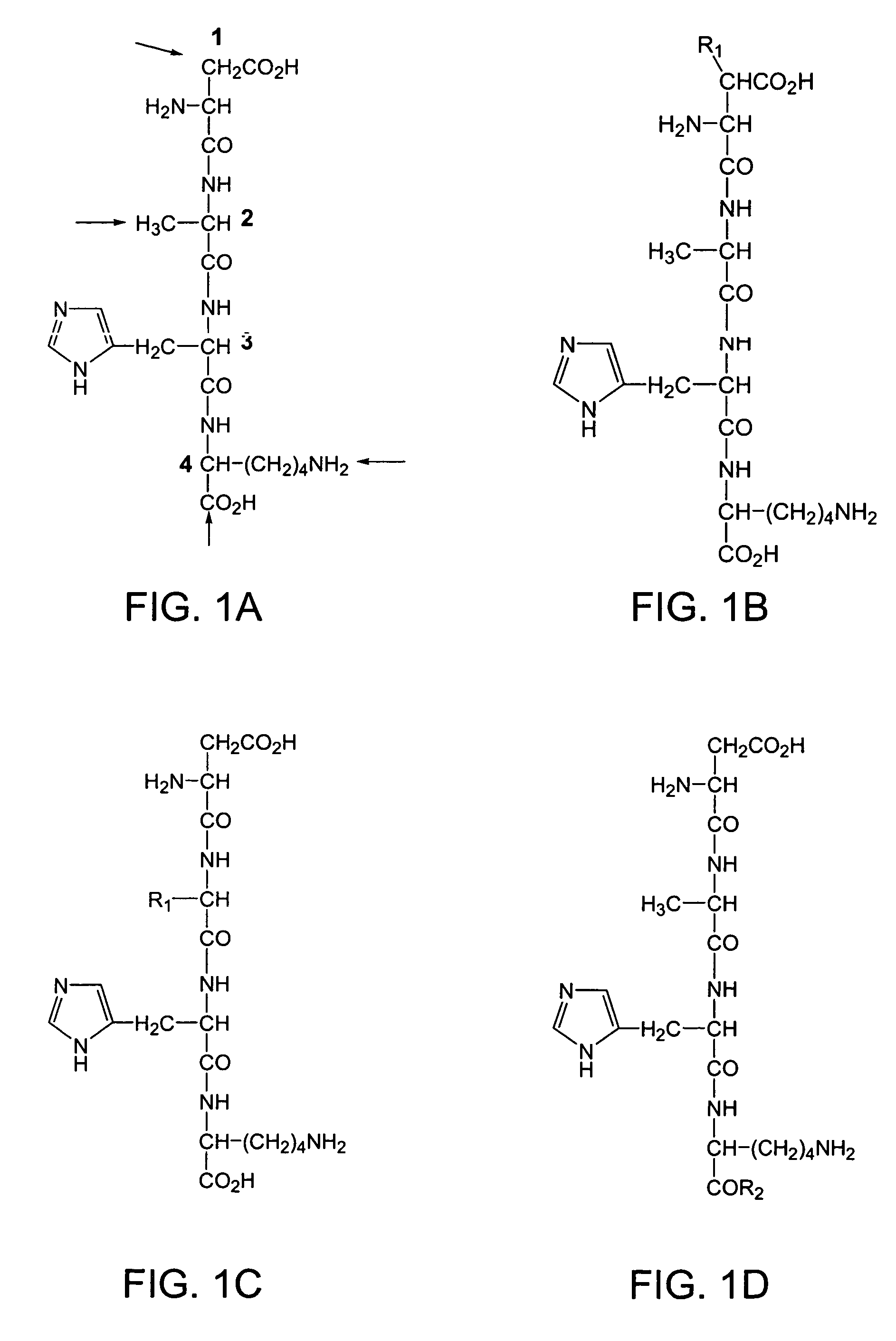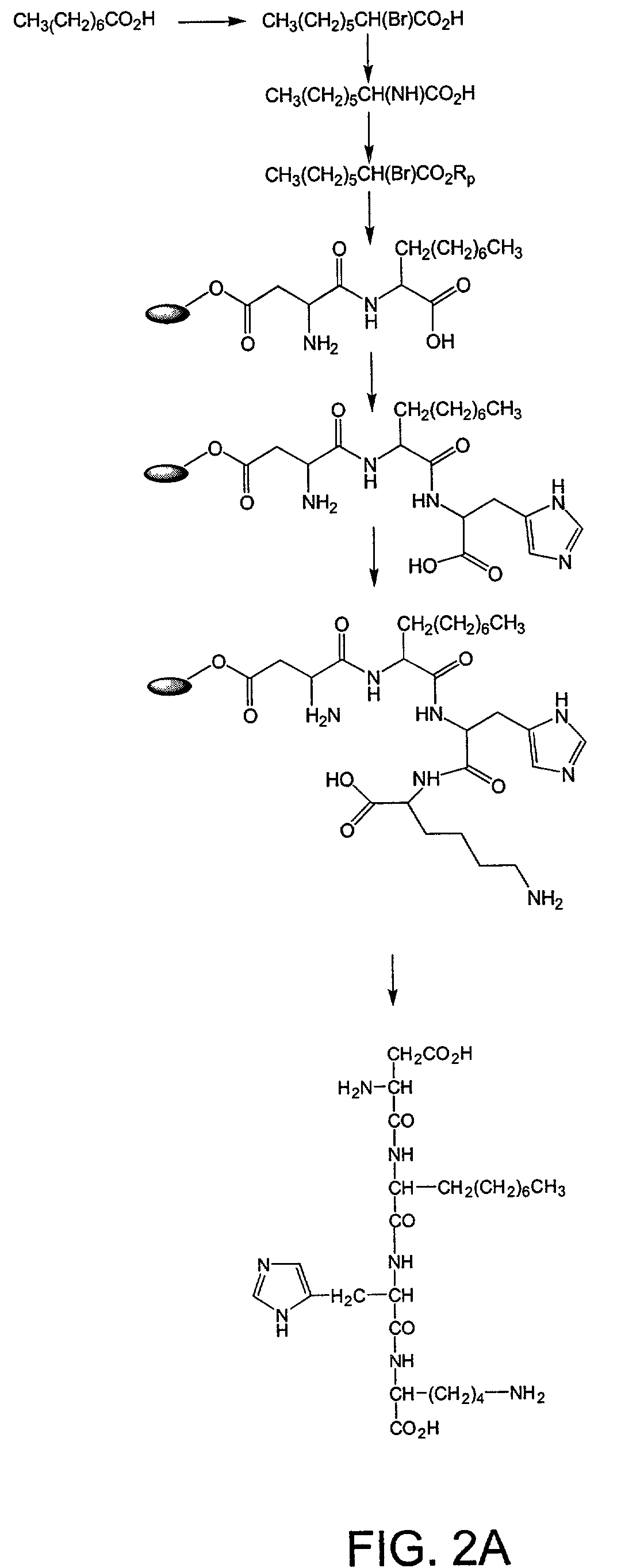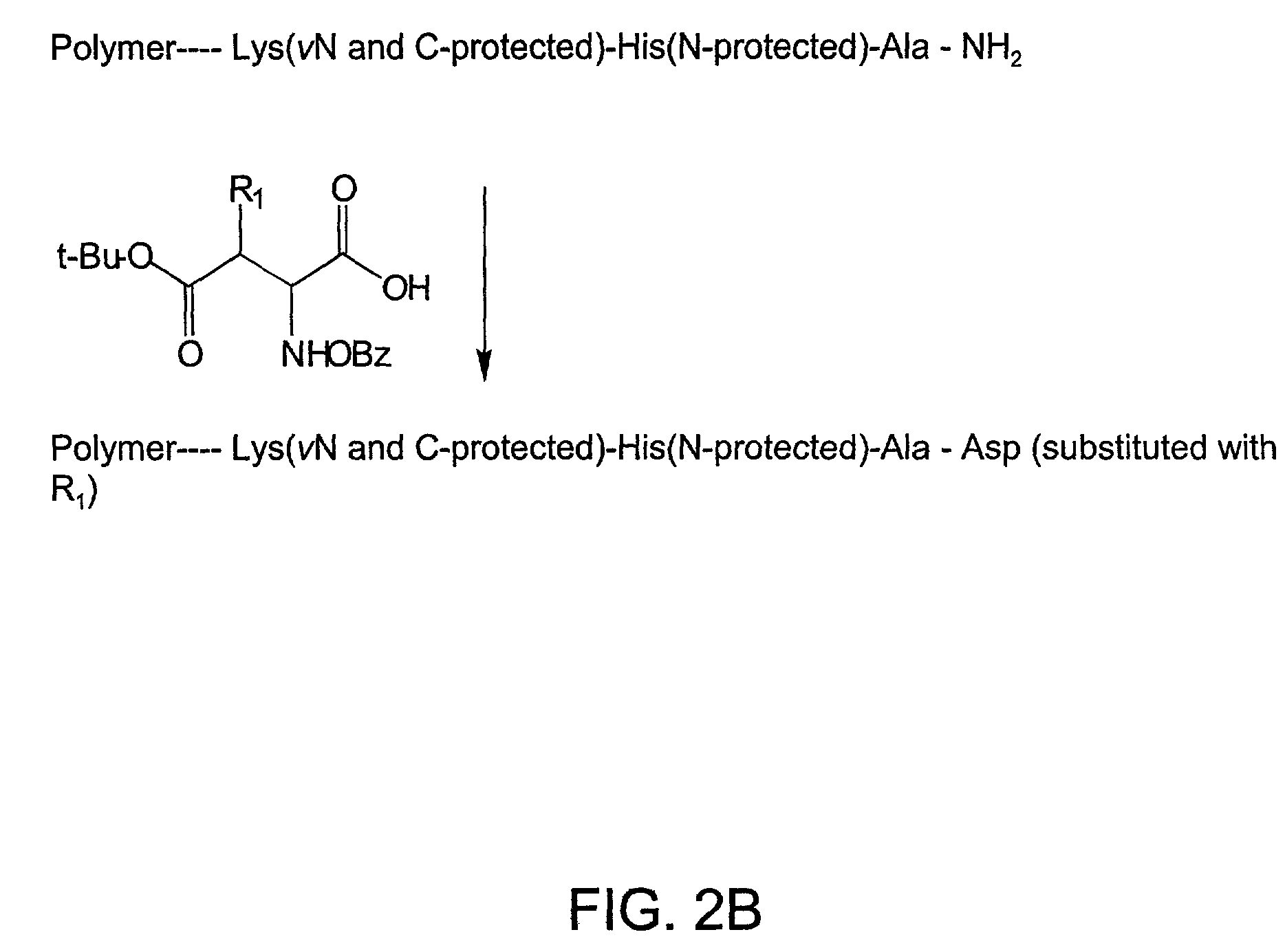Metal-binding compounds and uses therefor
- Summary
- Abstract
- Description
- Claims
- Application Information
AI Technical Summary
Benefits of technology
Problems solved by technology
Method used
Image
Examples
example 1
Synthesis of Tetrapeptide Asp Ala His Lys [SEQ ID NO:1]
[0192]This example describes the synthesis of the tetrapeptide Asp Ala His Lys [SEQ ID NO:1] composed of all L-amino acids using standard solid-phase synthesis techniques. First, 9-fluorenylmethyloxycarbonyl (Fmoc)-protected Asp (νCOO— ester; Tolsulfonyl) on Wang resin (0.6 mmole; Nova Biochem) was suspended in a solution of piperidine / dimethylformamide (DMF) (40% v / v; 3 ml) for 30 min with occasional agitation. At the end ofthis period, the solvent was drained, and the resin was washed sequentially with DMF and dichloromethane (DCM; 5×3 ml). A ninhydrin test was used to monitor the reaction. The resin was swollen with DMF (˜1 ml). The C-protected t-benzyloxycarbonyl (Boc) ester of alanine in DMF was added, followed by a mixture of diisopropylamine (8 equivalent) and 2-(1H-benzotriazole-1-yl)-1,2,3,3-tetramethyluroniumtetrafluoroborate (TBTU-) (4 equivalents). The resin was shaken for about 24 hours, and the reaction was monitor...
example 2
Preparation of Cyclohexanediamine
[0194]Derivative of Asp Ala His Lys [SEQ ID NO:1]
[0195]Trans-diaminocyclohexane was prepared by resolving cis / trans 1,2-diaminocyclohexane (Aldrich-Sigma) as the tartaric acid salt. The R-trans isomer melts at 75° C. andthe S-trans isomer melts between 43-45° C. (Ph.D. Thesis, P.D. Newman, University College, Cardiff, U.K., 1994). The trans-diaminocyclohexane (10 gm) was then suspended in anhydrous toluene (30 mL) and cooled to 5° C. in an ice bath, and bromoacetic acid (8 gm) in toluene (25 mL) was added dropwise. At the end of the addition, the reaction temperature was raised to 30° C. and kept at that temperature for a further 5 hours. Toluene was evaporated, and the R-trans 1,2-diaminocyclohexane diacetic acid was crystallized from hexane / toluene to give a white solid (yield 70%). The product was characterized by spectroscopic methods.
[0196]The resin-bound tetrapeptide prepared in Example 1 (20 mg) was suspended in DMF (5 mL) and was treated with...
example 3
Preparation of Tetrapeptide Tetracetic Acid
[0197]The resin-bound tetrapeptide prepared in Example 1 (20 mg) was suspended in DMF (5 mL) and treated with excess (10-fold) chloroacetic acid. The resin was shaken at room temperature for 48 hours, followed by heating to 60° C. for a further hour. DMF was removed by filtration, and the resin was washed with DMF followed by DCM (5×3 mL). Partially dried resin was used without further treatment in the next stage. Hydrolysis of the resin linkage was effected by treating the resin-bound reaction product with TFA (5 mL; 5 hr). The resin was separated and washed with DCM. The washings were combined with TFA and concentrated under vacuum (yield 30% / ). The product (formula given in FIG. 4) was characterized by spectrometric methods.
PUM
| Property | Measurement | Unit |
|---|---|---|
| Molar density | aaaaa | aaaaa |
| Molar density | aaaaa | aaaaa |
| Molar density | aaaaa | aaaaa |
Abstract
Description
Claims
Application Information
 Login to View More
Login to View More - R&D
- Intellectual Property
- Life Sciences
- Materials
- Tech Scout
- Unparalleled Data Quality
- Higher Quality Content
- 60% Fewer Hallucinations
Browse by: Latest US Patents, China's latest patents, Technical Efficacy Thesaurus, Application Domain, Technology Topic, Popular Technical Reports.
© 2025 PatSnap. All rights reserved.Legal|Privacy policy|Modern Slavery Act Transparency Statement|Sitemap|About US| Contact US: help@patsnap.com



